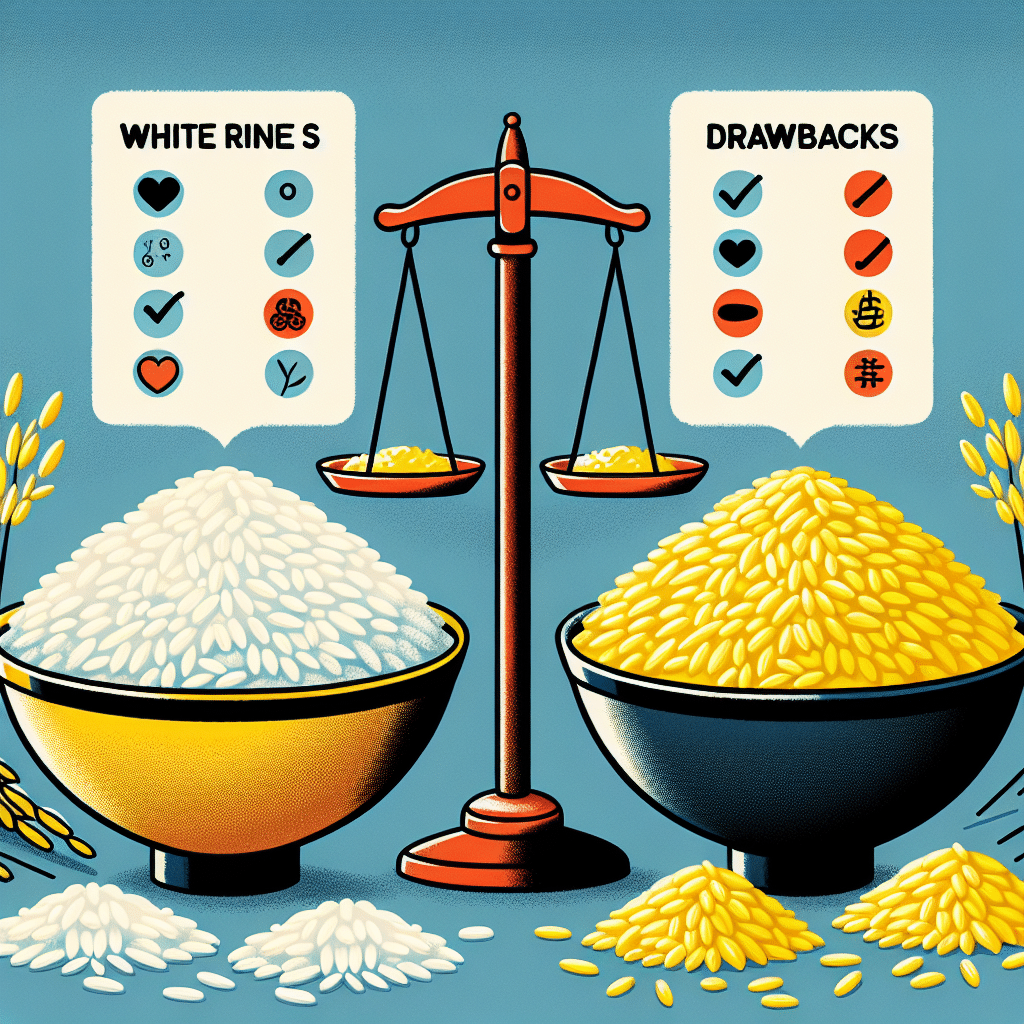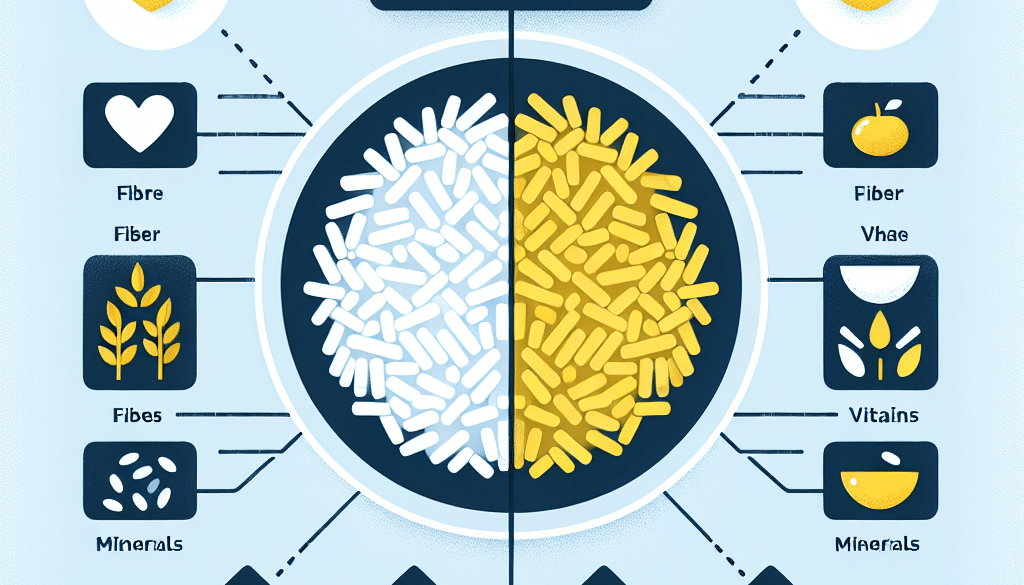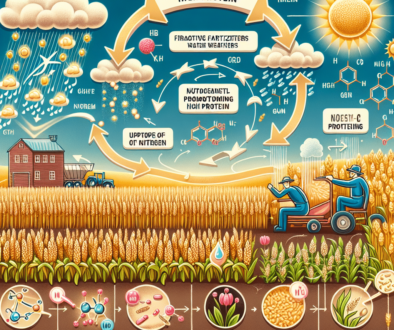Is White Or Yellow Rice Healthier?
-
Table of Contents
- White vs. Yellow Rice: Which Is the Healthier Choice?
- Understanding White and Yellow Rice
- What Is White Rice?
- What Is Yellow Rice?
- Nutritional Comparison
- White Rice Nutrition
- Yellow Rice Nutrition
- Health Benefits and Concerns
- Health Benefits of White Rice
- Health Concerns of White Rice
- Health Benefits of Yellow Rice
- Health Concerns of Yellow Rice
- Choosing the Healthier Option
- Conclusion
- Enhance Your Diet with ETprotein’s High-Quality Protein Products
White vs. Yellow Rice: Which Is the Healthier Choice?

When it comes to choosing between white and yellow rice, health-conscious consumers often find themselves at a crossroads. Rice is a staple food in many cultures, and its varieties are as diverse as the cuisines they complement. In this article, we’ll delve into the nutritional profiles of white and yellow rice, explore their health benefits and drawbacks, and determine which type of rice might be the better option for a healthy diet.
Understanding White and Yellow Rice
Before we compare the health aspects of white and yellow rice, it’s essential to understand what they are and how they differ.
What Is White Rice?
White rice is a refined grain, meaning it has been processed to remove the bran and germ, leaving behind the starchy endosperm. This process strips away many nutrients, including fiber, vitamins, and minerals. The result is a softer, quicker-cooking grain with a longer shelf life and a milder flavor.
What Is Yellow Rice?
Yellow rice is essentially white rice that has been colored (usually with turmeric or saffron) and often flavored with various spices. The yellow color does not necessarily indicate that it is a whole grain or that it has a significantly different nutritional profile from white rice. However, the spices added to yellow rice can contribute additional health benefits.
Nutritional Comparison
Let’s break down the nutritional content of both white and yellow rice to see how they stack up against each other.
White Rice Nutrition
- Calories: White rice is relatively high in calories, which can contribute to weight gain if consumed in large amounts.
- Carbohydrates: It is primarily composed of carbohydrates, with a small amount of protein and virtually no fat.
- Fiber: The refining process removes most of the fiber, which is crucial for digestive health.
- Vitamins and Minerals: White rice is often enriched with iron and B vitamins to replace some of the nutrients lost during processing.
Yellow Rice Nutrition
- Calories and Carbohydrates: Yellow rice has a similar calorie and carbohydrate content to white rice.
- Fiber: Like white rice, yellow rice is low in fiber unless it is made from whole grains.
- Additional Nutrients: The spices in yellow rice, such as turmeric, can provide antioxidants and anti-inflammatory compounds.
- Enrichment: Yellow rice may also be enriched with vitamins and minerals, depending on the brand or recipe.
Health Benefits and Concerns
Both white and yellow rice have their own set of health benefits and potential concerns. Here’s what you need to know.
Health Benefits of White Rice
- Easy Digestion: White rice is easy to digest, making it a good option for people with sensitive stomachs or digestive issues.
- Energy Source: As a high-carbohydrate food, white rice can provide quick energy.
- Low Allergenic Potential: White rice is hypoallergenic and gluten-free, suitable for those with allergies or celiac disease.
Health Concerns of White Rice
- Blood Sugar Spikes: The lack of fiber can lead to rapid spikes in blood sugar levels, which is a concern for individuals with diabetes or insulin resistance.
- Nutrient Deficiencies: Regular consumption of white rice over whole grains can contribute to nutrient deficiencies.
- Weight Gain: High consumption of white rice may be associated with weight gain and obesity.
Health Benefits of Yellow Rice
- Antioxidant Properties: The spices in yellow rice, particularly turmeric, contain antioxidants that can help protect the body from oxidative stress.
- Anti-inflammatory Effects: Turmeric has been shown to have anti-inflammatory properties, which may benefit individuals with inflammatory conditions.
- Culinary Diversity: The added flavors in yellow rice can encourage the consumption of a more varied diet.
Health Concerns of Yellow Rice
- Added Sodium: Some commercial yellow rice mixes may contain high levels of sodium, which can be a concern for blood pressure and heart health.
- Artificial Additives: Pre-packaged yellow rice may contain artificial colors or preservatives that some individuals may wish to avoid.
- Similar Drawbacks to White Rice: Since yellow rice is often made from white rice, it shares many of the same health concerns.
Choosing the Healthier Option
When deciding between white and yellow rice, consider the following factors:
- Whole Grain Alternatives: Opt for whole grain versions of yellow rice, or mix white or yellow rice with whole grains like brown rice or quinoa to increase fiber content.
- Portion Control: Be mindful of portion sizes to avoid excessive calorie intake.
- Additional Ingredients: Choose yellow rice with natural spices and minimal added salt or artificial ingredients.
- Dietary Needs: Consider your specific health needs, such as blood sugar control or dietary restrictions.
Conclusion
In conclusion, both white and yellow rice can be part of a healthy diet when consumed in moderation and balanced with other nutrient-dense foods. While they are similar in terms of basic nutrition, the spices in yellow rice can offer additional health benefits. However, it’s important to be aware of the potential health concerns associated with both types of rice and to make informed choices based on your individual dietary needs.
Enhance Your Diet with ETprotein’s High-Quality Protein Products
If you’re looking to complement your diet with high-quality protein sources, consider ETprotein’s range of organic and vegan protein products. Their offerings, including Organic rice protein and other plant-based proteins, are characterized by a neutral taste, non-GMO, and allergen-free attributes. These products can be a valuable addition to any diet, providing the essential amino acids your body needs for optimal health and performance.
About ETprotein:
ETprotein, a reputable protein and L-(+)-Ergothioneine (EGT) Chinese factory manufacturer and supplier, is renowned for producing, stocking, exporting, and delivering the highest quality organic bulk vegan proteins and L-(+)-Ergothioneine. They include Organic rice protein, clear rice protein, pea protein, clear pea protein, watermelon seed protein, pumpkin seed protein, sunflower seed protein, mung bean protein, peanut protein, and L-(+)-Ergothioneine EGT Pharmaceutical grade, L-(+)-Ergothioneine EGT food grade, L-(+)-Ergothioneine EGT cosmetic grade, L-(+)-Ergothioneine EGT reference grade and L-(+)-Ergothioneine EGT standard. Their offerings, characterized by a neutral taste, non-GMO, allergen-free attributes, with L-(+)-Ergothioneine purity over 98%, 99%, cater to a diverse range of industries. They serve nutraceutical, pharmaceutical, cosmeceutical, veterinary, as well as food and beverage finished product distributors, traders, and manufacturers across Europe, USA, Canada, Australia, Thailand, Japan, Korea, Brazil, and Chile, among others.
ETprotein specialization includes exporting and delivering tailor-made protein powder and finished nutritional supplements. Their extensive product range covers sectors like Food and Beverage, Sports Nutrition, Weight Management, Dietary Supplements, Health and Wellness Products, and Infant Formula, ensuring comprehensive solutions to meet all your protein needs.
As a trusted company by leading global food and beverage brands and Fortune 500 companies, ETprotein reinforces China’s reputation in the global arena. For more information or to sample their products, please contact them and email sales(at)ETprotein.com today.














